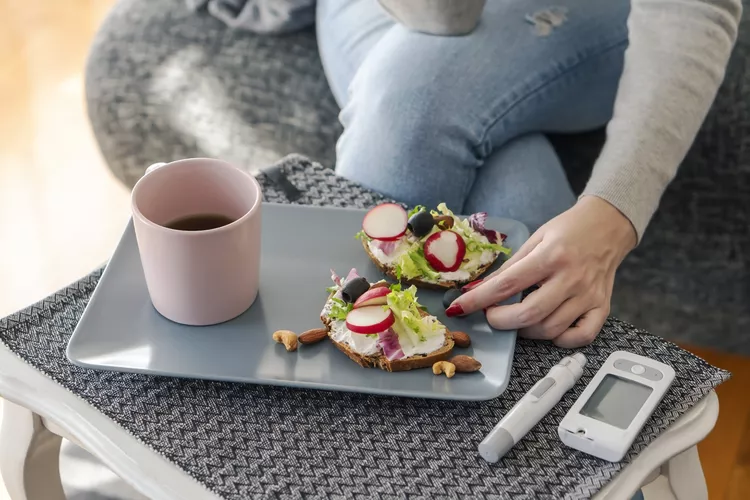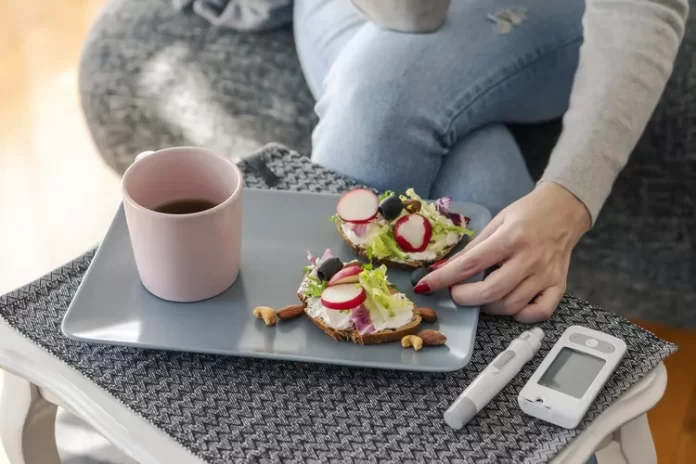For individuals with diabetes, opting for snacks that promote blood sugar control is crucial. Discover the snacks that can be beneficial and those best avoided to effectively manage diabetes.

Type 2 diabetes, a persistent condition, arises when the body fails to effectively utilize insulin, a hormone crucial for facilitating glucose entry into cells. Glucose, a form of sugar derived from consumed food, is essential for energy production. However, when insulin fails to transport glucose into cells, it accumulates in the bloodstream, resulting in elevated blood glucose levels.
Given that glucose originates from dietary sources, individuals with type 2 diabetes must be vigilant about their diet, particularly their carbohydrate consumption. Carbohydrates undergo breakdown into glucose, causing a surge in blood sugar levels. This awareness extends beyond main meals to snack times. Selecting snacks rich in protein, fiber, and healthy fats is pivotal for managing blood sugar levels and curbing hunger between regular meals.
Best Snacks for Diabetes
When contemplating snacks, the association often leans towards high-sugar, carbohydrate-laden options. Nevertheless, there exists a plethora of diabetes-friendly snacks that can satiate your taste buds without causing a spike in your blood sugar levels.
Greek yogurt with berries
Unsweetened greek yogurt is an excellent snack for diabetes because it is high in protein and relatively low in carbohydrates.
One single-serve 5.5-ounce container of unsweetened, plain, nonfat Greek yogurt provides:
- Calories: 92
- Protein: 16.1g
- Fat: 0.6g
- Carbohydrates: 5.7g
- Calcium: 173mg, 13% of the daily value
Enhancing your yogurt with a medley of blueberries, strawberries, or raspberries not only introduces natural sweetness but also brings the benefits of low sugar content and high fiber. Berries, being inherently low in sugar, make for a flavorful and nutritious addition. For instance, half a cup of fresh raspberries contains 4 grams of fiber, 7.3 grams of carbohydrates, and merely 2.7 grams of sugar (USDA, 2019).
Fiber plays a pivotal role in any diet, particularly for individuals managing diabetes. Its unique characteristic of being indigestible and non-absorbable prevents a spike in blood sugar, unlike some other carbohydrates. Beyond its impact on blood sugar, fiber contributes to improved digestion, offers protection against heart disease, and supports weight management (CDC, 2022).
Hard-boiled eggs
Hard-boiled eggs are a great high-protein snack for those with diabetes.
One large hard-boiled egg provides: (USDA, 2019)
- Calories: 77.6
- Protein: 6.3 g
- Fat: 5.3g
- Carbohydrates: 0.6g
- Fiber: 0g
Eggs are also filling and can help reduce your overall daily calorie intake, which may lead to weight loss (Keogh, 2020). If you’re overweight, a modest weight loss of 5-10% of your body weight can improve your blood sugar control and decrease the need for glucose-lowering medications (ADA, 2015)(CDC, 2022).
Celery sticks and nut butter
Dipping celery sticks in nut butter, such as peanut butter, is another satisfying snack to keep you energized until your next meal. Celery sticks are naturally very low in calories and carbohydrates.
One cup of raw celery provides: (USDA, 2019)
- Calories: 14.1
- Protein: 0.7g
- Fat: 0.2g
- Carbohydrates: 3g
- Fiber: 1.6g
Pairing celery sticks with one to two tablespoons of nut butter adds protein and healthy fats to your snack to curb hunger and promote blood sugar control.
One tablespoon of peanut butter provides: (USDA, 2019)
- Calories: 94.4
- Protein: 3.8g
- Fat: 8g
- Carbohydrates: 3.5g
- Fiber: 1.1g
Popcorn
As long as it’s not served with butter or salt, popcorn is considered a good whole-grain snack for diabetes (Asif, 2014).
One cup of air-popped, unsalted popcorn provides: (USDA, 2019)
- Calories: 30
- Protein: 1g
- Fat: 0.34g
- Carbohydrates: 6.2g
- Fiber: 1.2g
Popcorn is low in calories, which can support a healthy weight and overall management of type 2 diabetes. It also contains fiber, which can help you feel full and consume fewer calories throughout the day, also helping with weight management (MedlinePlus, 2015).
Because the majority of calories in popcorn come from carbohydrates, be sure to measure your portions and limit yourself to three cups, which provides around 18.6 grams of carbohydrates.
Raw vegetables with hummus
Hummus is a creamy spread made from mashed chickpeas. It contains complex carbohydrates, plant-based protein, fiber, and healthy fat.
Two tablespoons of hummus provide: (USDA, 2019)
- Calories: 82.4
- Protein: 2.5g
- Fat: 5.8g
- Carbohydrates: 5.1g
- Fiber: 1.8g
Hummus has a low glycemic index, which means its carbohydrates take the body longer to digest and break down, causing a gradual rise in blood sugar. This means it is less likely to cause blood sugar spikes (Reister, 2020).
Hummus pairs perfectly with raw vegetables, including broccoli, carrots, and bell peppers, for a nutrient-rich, healthy snack for diabetes.
Handful of almonds
Almonds are an easy, nutrient-dense, on-the-go snack. Research shows that almonds and other tree nuts can improve blood sugar control for people with type 2 diabetes. Almonds are low in carbohydrates and high in magnesium and heart-healthy monounsaturated fats, which are thought to promote blood sugar control (Viguiliouk, 2014). They’re also a good source of other health-promoting nutrients, including fiber, protein, riboflavin, and vitamin E (Barreca, 2020).
One handful, or about 23 almonds, provides: (USDA, 2019)
- Calories: 164
- Protein: 6g
- Fat: 14.1g
- Carbohydrates: 6g
- Fiber: 3.5g
- Magnesium: 76.5mg, 18% of the daily value
- Riboflavin: 0.32mg, 25% of the daily value
- Vitamin E: 7.26mg, 48% of the daily value
Apple slices and peanut butter
Apple slices dipped in peanut butter is a quick and easy on-the-go snack for people with diabetes. Apples and other fruit are considered low glycemic index foods because of their fructose and fiber content. The natural sugar in apples can also satisfy a sweet tooth, curbing cravings (ADA).
One medium-sized, raw apple with the skin on provides: (USDA, 2019)
- Calories: 94.6
- Protein: 0.5g
- Fat: 0.3g
- Carbohydrates: 25.1g
- Fiber: 4.4g
Paired with one tablespoon of peanut butter, you will have a diabetes-friendly snack that contains healthy fats, fiber, and protein to promote blood sugar control.
Tuna salad
Tuna salad is a high-protein, refreshing snack that can be made in just a few minutes by combining a can of tuna and one to two tablespoons of mayonnaise. You can also add other ingredients, such as bell peppers and celery, if you’d like.
One 5-ounce can of tuna provides: (USDA, 2019)
- Calories: 121
- Protein: 27g
- Fat: 1.3g
- Carbohydrates: 0.1g
Tuna is a good source of omega-3 fatty acids, which can reduce triglyceride levels (a type of fat in the blood), protect against strokes, and keep your heart healthy.(MedlinePlus, 2021).
You can eat tuna salad by itself or enjoy it with whole-grain crackers. Swap the mayonnaise for mashed avocado for an extra nutritional boost.
Avocado toast
Avocados are good for people with diabetes because they are low in carbohydrates yet high in fiber. They also provide a multitude of vitamins and minerals and are a good source of healthy fats.
One-half of an avocado provides: (USDA, 2019)
- Calories: 160
- Protein: 2g
- Fat: 14.7g
- Carbohydrates: 8.5g
- Fiber: 6.7g
For a diabetes-friendly snack, mash half of an avocado and spread it on a piece of fresh, toasted whole-wheat bread. Sprinkle with sea salt and red pepper flakes.
Snacks to Avoid
You’ll want to limit your intake of processed foods, refined grains, and added sugar when snacking. These foods tend to raise your blood sugar faster than whole, minimally processed foods.
Snacks to limit include: (NIDDK, 2016)
- Chips
- Cookies
- Candy
- Sugary beverages
- Ice cream
- Sweetened yogurt
- Salty foods
- Fried foods
- Fruit juice
- Sweetened cereal
- Canned fruit
- Cereal bars
When you do have these snacks, you should do so less often and in smaller amounts (MedlinePlus).
When to Snack
Snacks play a multifaceted role—they can sustain you until your next main meal, prevent blood sugar dips, and provide fuel for physical activity.
Previously, the conventional wisdom held that individuals with type 2 diabetes should incorporate multiple daily snacks into their meal plans to stabilize blood sugar. However, this perspective has evolved, especially for those already maintaining three well-balanced meals each day (ADA, 2020).
Determining the necessity of a snack can be based on internal hunger cues and regular monitoring of blood sugar levels. If hunger strikes between meals, opting for a low-carbohydrate snack is advisable, such as those mentioned earlier.
While type 2 diabetes is commonly associated with elevated blood sugar, it’s crucial to acknowledge the potential for low blood sugar, especially for those using insulin or specific medications. In such cases, easily digestible foods containing around 15 grams of carbohydrates, like half a cup of juice, a tablespoon of honey, or glucose tablets, can be consumed. Monitor blood sugar levels, and if they remain low, repeat the 15-gram serving every 15 minutes until levels normalize. Subsequently, shift to a well-balanced snack or meal to maintain blood sugar within the target range (ADA).
Additionally, your healthcare provider might suggest having a snack before bedtime or during exercise to prevent blood sugar from dropping too low (MedlinePlus, 2022).

